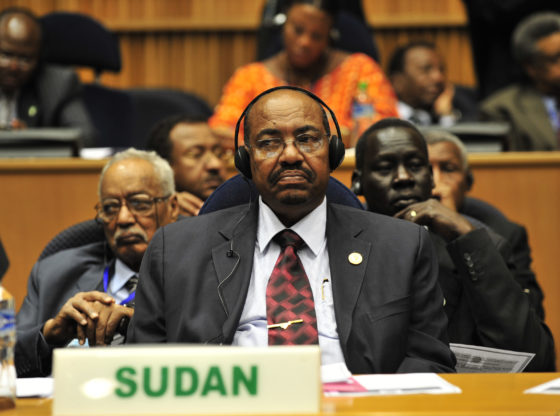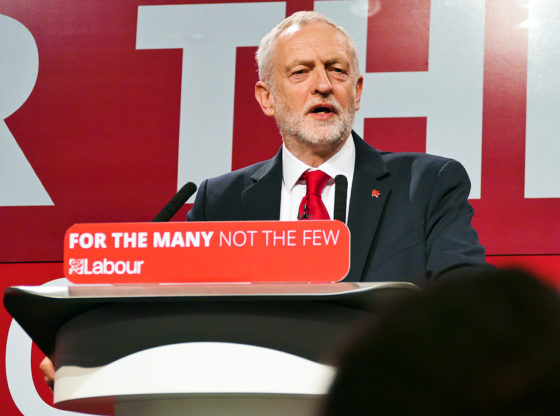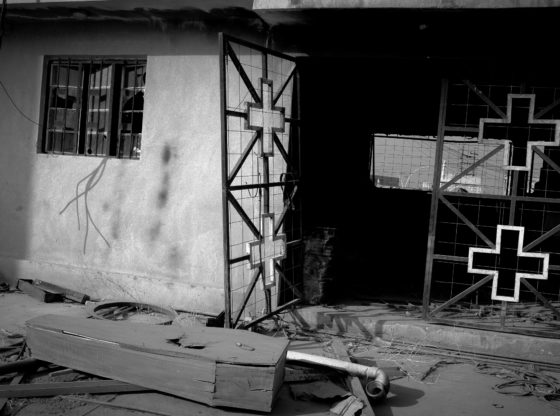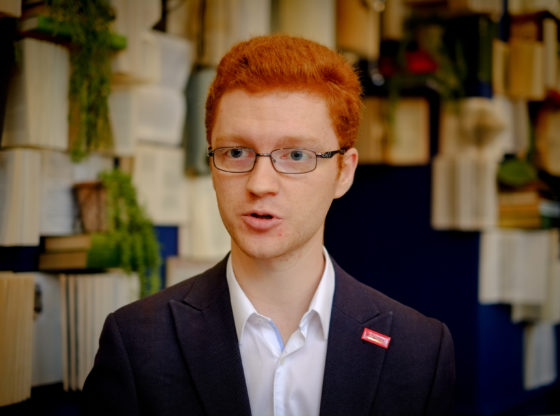Glasgow, the second city of empire, is celebrated for a variety of reasons but an honest public acknowledgement of the city’s colonial legacy is overdue. In this essay, Stephen Mullen illuminates Glasgow’s links with colonialism and examines how civic and political Scotland has dealt with the issue.
The Merchant City. A name coined as a late twentieth-century marketing strategy to rebrand the east end of Glasgow city centre, and to bring into focus streets named after eighteenth-century merchants. The historic enclave might be more accurately renamed ‘Slave Merchant City’, or even ‘Slave Produce Merchant City’, although this may be less attractive to the resident hotels, restaurants, and high-end retailers.
Within this rebranding, there remains no official acknowledgement of the contribution that enslaved people made to the development of Glasgow, an oversight given the source of the city’s eighteenth-century wealth. With simultaneous absence and a public nod to Glasgow’s (in)famous Tobacco Lords and Sugar Aristocracy – as they called themselves – it is hardly surprising that the street names, and the history behind them, have once again come under scrutiny in a recent international debate.
GREAT BRITAIN, SCOTLAND, AND EMPIRE
If Americans are now questioning their national history and how the Confederacy has been represented, it is unsurprising that Great Britain and its Empire should invoke similar debate. However, the situations are not directly comparable. The explicit purpose of the Confederate States of America was to preserve slavery and white supremacy. Whilst the British Empire was not created with the same objectives, the Empire was dependent on chattel slavery as its main economic foundation for over two centuries.
The monuments to Confederacy leaders were erected with the intention of endorsing white supremacy during the Jim Crow period, the ascendancy of the KKK, and the Civil Rights era. The presence of grandiose statues of imperial industrialists or militarists in Great Britain - such as Cecil Rhodes - sanitises colonial profiteering and oppression.
Given the pervasive role of Scots across the British Empire, it is unsurprising the Scottish debate has been reignited too - although caution is required.
Just like America, the work of historians and activists are revising public representations. David Olusoga, for example, has recently called for the removal of the statue of Edward Colston, who was involved with the Royal African Company, the premier English slave-trading firm established by the Stuarts and London merchants in the 1680s. Given the pervasive role of Scots across the British Empire, it is unsurprising the Scottish debate has been reignited too - although caution is required.
GLASGOW AND THE MERCHANT CITY
Whilst the Scottish debate is gathering momentum, history is being unconsciously misused for dramatic effect. Patrick Harvie, co-convenor of the Scottish Green Party in Scotland is on record: “We should look at the people who built great places and cities such as Glasgow and say something meaningful about the whole context. Huge numbers of people had an economic interest in the slave trade and you can trace a lot of our current economic inequality back to the extraordinary compensation.”
This sentiment is commendable but few direct slave-trade voyages actually left Clyde ports: it is widely acknowledged to have been a low-scale enterprise. Instead, Glasgow merchants were much more complicit in the trade in slave-grown produce, especially tobacco, cotton, and sugar, and as slave-owners in the early nineteenth century. And the legacy of the compensation - awarded for the emancipation of slavery in 1834, not the abolition of the slave trade in 1807 - is only beginning to be understood by historians, led by the Legacies of British Slaveownership team at University College London.
It is premature to suggest that modern inequality in Great Britain was a legacy of the compensation process, although the emancipation of slavery consolidated an imbalance between colony and metropole that endures today. The city of Glasgow does have an issue, but we need to be clear about what the terms of that issue actually are.
Whilst in America, Confederacy symbols were placed provocatively to endorse modern oppression, the street-names of Glasgow are arguably a less overt celebration. The names reflect the history of the location and remind that profits accrued from slavery nourished the city through successive phases of development.
In Glasgow, there are no statues dedicated to Tobacco Lords, the Sugar Aristocracy, or slave-traders - perhaps with the exception of King William, whose statue is near Cathedral Square (William Pettigrew’s Freedom’s Debt named William as a Governor and stockholder in the Royal African Company (RAC) in the 1690s, although his interest seems to have focused on using the RAC as a naval power against the French). However, street-names of the Merchant City - and the title itself - are said to commemorate slave-owners and profiteers.
Secondly, the brutal realities behind Glasgow’s connections with chattel slavery in the colonial period remain unacknowledged. At least two offending streets are named after the city’s most illustrious merchants. Glassford Street is named after John Glassford of Douglaston, one of the wealthiest of Glasgow’s Tobacco Lords. His famous Palladian townhouse, the Shawfield Mansion, was located on the corner of modern Argyle Street and Glassford Street. The famous Glassford family portrait damns Glassford as an owner of a young black page boy. The mansion was demolished in 1792 and the street named after the (in)famous resident who owned the area.
Buchanan Street, the centre of the ‘Style Mile’, arguably the most potent symbol of Glasgow’s image as a cosmopolitan city, is named after the Tobacco Lord, Andrew Buchanan. In 1760, he purchased the land now known as Buchanan Street and lived there for several years. Andrew Buchanan of Drumpellier was behind the construction of Virginia Mansion (situated on the site of the modern Corinthian) in 1753, and the naming of Virginia Place and Virginia Street. The building is gone although the street-names remain, testament to Glasgow’s long-term connections with North America.
Whilst in America, Confederacy symbols were placed provocatively to endorse modern oppression, the street-names of Glasgow are arguably a less overt celebration. The names reflect the history of the location and remind that profits accrued from slavery nourished the city through successive phases of development.
The Merchant City sobriquet, however, is a modern creation, originating in Andor Harvey Gomme and David Walker’s Architecture of Glasgow (1968). Whilst the built heritage was celebrated in this important text, in the 1970s the zone was under threat due to the combination of a collapse in government funding, the proposed expansion of Strathclyde University, and poor planning decisions over many years. Planning officials subsequently adopted the term ‘The Merchant City’ to differentiate the zone from the city centre, which afterwards entered common usage and proved beneficial in marketing the area as a special enclave with a unique identity.
Would the city’s leaders deem The Merchant City an appropriate title if presented with the same choice today? If so, there would likely be major opposition from activists and the public.
It is now one of the city’s most distinctive areas, boasting its own annual festival. Arguably, the term glorifies the merchants although is devoid of acknowledgement how fortunes were acquired. There seems to have been little criticism at the time of renaming, except by author James Kelman and others, who proposed an alternative title of ‘Workers’ City’ in the period leading up to Glasgow’s term as European City of Culture in 1990:
[The] merchants and politicians made the bulk of their personal fortunes by the simple expediency of not paying the price of labour. In the Caribbean they owned huge plantations and forced people to work on them for nothing. They were slavers. Those legendary heroes our children are taught to honour – Buchanan, Miller, Ingram and so on – were men who trafficked in degradation, causing untold misery, death and suffering to scores of thousands of men, women and children. (Kelman, Some Recent Attacks: Essays Cultural and Political, 1992, pp.1-2).
Would the city’s leaders deem The Merchant City an appropriate title if presented with the same choice today? If so, there would likely be major opposition from activists and the public, informed by academic debate. What has changed since 1990?
POPULAR CONSCIOUSNESS
One commentator recently called for Scotland to confront its colonial, racist past. But what does this clarion call mean in practice? Activists and academics have been undertaking work on related issues for many years. From 2001, Glasgow Anti-Racist (GARA), now CRER, led by Jatin Haria, has coordinated Black History Month in October, including guided tours.
In 2007, the conversation was opened up. New Labour committed to marking the bicentennial of the abolition of the slave trade, including £16 million to be administered through the Heritage Lottery Fund for a national programme of events. Anne McChlery and Glasgow Building Preservation Trust coordinated a HLF funded project (in partnership with GARA) which focused on the city’s built heritage and links to slavery and abolition. A heritage guide and exhibition was produced which influenced the book It Wisnae Us, commissioned by GARA and published in 2009.
This is also a ‘golden age’ for the academic study of Scotland and New World slavery. In the last decade or so, Douglas Hamilton, Iain Whyte, and Michael Morris have published monographs on related themes. T.M Devine’s edited collection Recovering Scotland’s Slavery Past was Edinburgh University Press’s best-selling title in 2015-16. New understandings about the enslaved in Great Britain are being shaped by Professor John Cairns who has worked for many years at the University of Edinburgh on the legal situation of black population in eighteenth-century Scotland. Professor Simon Newman’s ‘Runaway Slaves’ project at the University of Glasgow is one of the most important Atlantic world studies in Great Britain today.
The Glasgow 2014 Commonwealth Games was an important event in the cultural history of Scotland. The ‘How Glasgow Flourished’ exhibition was the most visited of its type in the history of the Kelvingrove Museum. The panel on slavery, albeit small, marked an important acknowledgement in the city’s premier museum, and in the process lifted a veil. A fixed exhibition in the Gallery of Modern Art now explains the rise of Tobacco Lord William Cunninghame.
The Glasgow 2014 cultural programme also had important high-profile events that interrogated the city’s historical connections with slavery. Emancipation Acts – developed by Graham Campbell and Anne McLaughlin, and based on It Wisnae Us - depicted slavers, merchants, and abolitionists in the Merchant City. The Empire Café – organised by Professor Louise Welsh and architect Jude Barber – promoted discussion amongst a synergy of academics, writers, activists, and poets.
Poets continued to have an impact after the Games, too. In 2016, Kate Tough’s People Made Glasgow was chosen as part of the Best Scottish Poems collection. The story of the enslaved in Scotland are now appearing in theatres and on the big screen. The playwright May Sumbwanyambe has recently been commissioned by the National Theatre of Scotland to write new production, Joseph Knight. This year, the short film 1745 written by Morayo Akande, who also plays a lead role with Moya Akande, is the first of its type dedicated to telling the story of enslaved people in eighteenth-century Scotland.
There are important African-Caribbean voices in Scotland too. Professor Sir Geoff Palmer is a leading spokesperson on Scotland and Caribbean slavery, most recently in The Peoples History Show on Scottish Television in June 2017. Graham Campbell - now an SNP Councillor in Glasgow - continues as project leader of Flag-Up Scotland Jamaica, an organisation designed to increase knowledge of the historical connections between both countries. A PhD researcher at the University of Glasgow, Marenka Thompson-Odlum, from St Lucia, is currently examining Glasgow Museum’s collections for links to slavery.
Whilst there is no absence of evidence, there remains absence of official acknowledgement. Glasgow (with satellite ports Greenock and Port Glasgow) is the only major Atlantic port in Great Britain involved with the slave-trade or slavery - the others being London, Liverpool and Bristol - that has no official plaque, memorial, or permanent museum marking or explaining those historic connections. Is there any will for change?
POLITICAL WILL
Despite a recent claim that the Scottish National Party (SNP) was guilty of burying Scotland’s historic ‘atrocities’, more objective analysis reveals a different picture. Labour were in power in the devolved Scottish parliament from 1999-2007 (as the Scottish executive) and the SNP has been in power since 2007 (when the executive was renamed the Scottish government) until the present, first in a minority then majority government (and a minority again from 2016). Throughout this time, Glasgow City Council was controlled by the Labour party (from 1980 until May 2017).
In the last decade or so, there has been subversion of Scotland’s colonial past. In 2006, the Scottish executive commissioned the now notorious booklet to commemorate the bicentennial of the abolition of the slave trade. The work of historians Eric Graham and Iain Whyte was subsequently embargoed and their draft subject to 188 editorial changes which softened the narrative beyond recognition. Whilst the ‘burying atrocities’ claim lacks any supporting evidence, the SNP are not without fault: in the Homecoming 2009 (a concept developed under Scottish Labour), a romanticised version of the nation’s history was officially endorsed. There were, however, some improvements in the later version.
In 2006, the Scottish executive commissioned the now notorious booklet to commemorate the bicentennial of the abolition of the slave trade. The work of historians Eric Graham and Iain Whyte was subsequently embargoed and their draft subject to 188 editorial changes which softened the narrative beyond recognition.
During the second Homecoming in 2014, the Scottish government pre-empted the criticisms of five years earlier. Alongside Homecoming Scotland and the National Museums of Scotland, the Scottish government sponsored the July 2014 conference ‘The Global Migrations of the Scottish People since c.1600: Issues, Debates and Controversies’, which was jointly organised by Professor Sir Tom Devine. Fiona Hyslop MSP - Cabinet Secretary for Culture and External Affairs - wrote the foreword for the conference brochure. Humza Yousaf MSP - Minister for External Affairs and International Development - opened the session that included panels ‘The Scottish Diaspora since c.1600: Profit or Loss for the Homeland?’, followed by ‘Scotland and Black Slavery’.
Now this conference might have been criticised on its own terms as a tokenistic effort, whilst the marketing focus remained on rich, white North America. But at the very least, this was an important acknowledgement: an event in the National Museum of Scotland that addressed the brutal realities of Scottish migration and New World slavery, organised by the nation’s foremost historian, and officially endorsed by the Scottish government (the National Museum of Scotland’s own lack of representation of New World slavery in its permanent collections is a debate for another day).
In spite of these improvements, however, it seems reasonable to state that neither Scottish Labour nor the SNP have made progress on official recognition at either the regional or national levels in the post-devolution period. But change is in the air.
Individual MPs have acknowledged Scotland’s connections with New World slavery, in both the British and Scottish Parliaments. During Anne McLaughlin’s maiden speech (she was formerly an SNP MP for Glasgow North-East) in July 2015, she supported calls for reparations for Caribbean countries from Great Britain (as did the then Labour backbencher Jeremy Corbyn in 2007). McLaughlin was unequivocal: ‘I will support calls for reparations for those countries that suffered most from our involvement in the slave trade - namely, the Caribbean countries’. McLaughlin later called for an apology from ‘not just the British Government, but the Government in Scotland’.
There have also been proposals for official recognition in the Scottish Parliament. On 10 April 2017, John Mason, SNP MSP for Glasgow Shettleston, hailed Kate Tough’s poem People Made Glasgow and entered a motion:
Proposals for a slavery museum, memorial garden or new street names, and believes that any action to further educate people on the contribution that the slave trade made to Glasgow can only be welcome to increase their understanding of themselves as a nation.
This motion was supported by 13 MSPs: 10 SNP; two Scottish Greens (including Andy Wightman and Ross Greer, but not including Patrick Harvie); and one Conservative, Alison Harris. There was seemingly no formal support from the five Liberal Democrat or the 23 Scottish Labour MSPs although such support would have reminded Labour colleagues in Glasgow (then in control of the City Council) that more might be done on this issue.
With the change in leadership of Glasgow City Council from May 2017, a new cadre of politicians are presented with an opportunity.
Motions that collect over 30 cross-party signatures within six weeks become eligible for debate, and the rest fall - which Mason’s did on 21 June 2017. This episode is perhaps indicative of Labour’s intransigence towards the recognition of Glasgow’s historical connections with slavery during its 37-year council administration.
With the change in leadership of Glasgow City Council from May 2017, a new cadre of politicians are presented with an opportunity. The SNP and the Green Party – both ostensibly in support of action – have a working majority in both Glasgow City Council as well as the Scottish parliament itself. Calls from individual politicians can be met with official action in whatever form of civic recognition deemed most appropriate.
CONCLUSION
Any strategy to address Glasgow’s colonial past should be grounded in verifiable evidence and shaped by debate with relevant individuals and organisations. Action could be benchmarked against other British (or American) cities which have addressed this past. For example, in 1995, the Bristol Slave Trade Action Group was formed from a multiracial group of activists, politicians, and academics. Subsequent research informed strategy in the city’s museums, and provided information for the naming of Pero’s Bridge.
If this type of approach is deemed appropriate, it should be complemented in Scotland with a programme of education in schools and universities that further unravels the distinctive Scottish role in the British Empire, and what imperialism meant for metropole and colonies. Indeed, if street names and representations of controversial figures are rightly under scrutiny, this could initiate a debate about national development based on exploitative, imperial connections. One thing is clear: doing nothing is no longer an option and the question is not if, but how should Scotland’s imperial past be addressed.
Stephen Mullen is a historian at the University of Glasgow. His forthcoming monograph The Glasgow Sugar Aristocracy in the British Atlantic World, 1775-1838 will be published by the Royal Historical Society/Institute of Historical Research in 2018.
Feature image: Glasgow Gallery of Modern Art. Image: PublicDomainPictures.net






